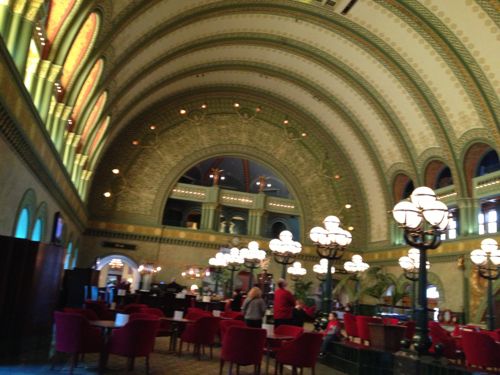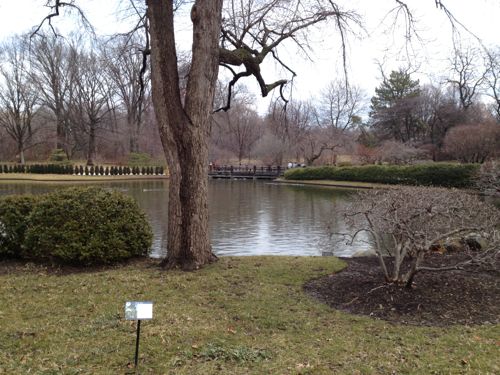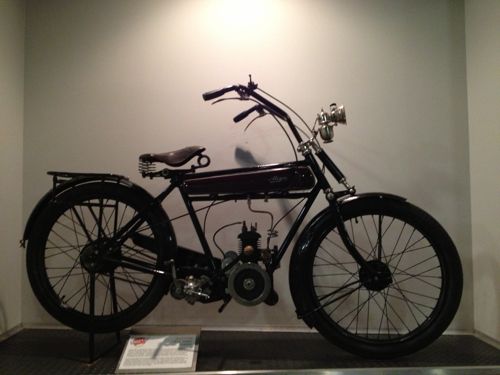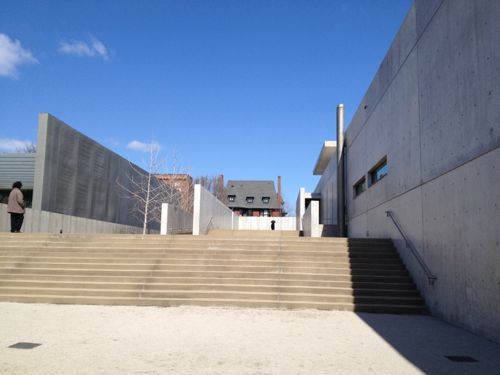Tour Guide For New St. Louis Resident
Having a boyfriend who is a new St. Louis resident means I get to play tour guide to introduce him to his new city. Before DFS moved in with me we had already seen quite a bit with meals at some interesting places (The Tap Room, Crown Candy Kitchen, Plush, Ricardo’s, Meskerem, The Royale, Pi Pizzeria, and Mojo). So he’d seen a variety of neighborhoods before moving here.
Since then we’ve continued exploring interesting places in St. Louis.




In going from place to place I share tidbits of information on history. After we got off the #97 (Delmar) MetroBus at Grand, on the way to the Pulitzer, I talked about the Carter Carburetor Headquarters, now Grand Center Arts Academy.
Where else do you think I should take my boyfriend?
— Steve Patterson
Get a “dark” tour of the Fox. Carondelet Park. Tower Grove Park. MoBot. Do the Cherokee St thing. Take a walk in the private streets of the CWE. Do a foot tour of Compton Heights.
The dark tour of the Fox sounds interesting, I’ll have to get him to do that without me as I assume it is not something I could do via wheelchair or walking with a cane.
Chair would be out but I’d bet you could do it with a cane. Defiantly worth trying.
By “dark” I”m assuming Ryley means going when there’s no show set up on stage, so that the tour includes backstage…definitely a more interesting tour. There are elevators both front and back of house…no need for you to stay home.
The arch, the City Museum, the Zoo, the Loop, the Grove, our breweries (both the A-B tour and the many small microbreweries), our many festivals, the Museum of Transportation, Laumeier Sculpture Park, Branson, “the lake”, Clayton, Maplewood, Kirkwood, Fergusson, Webster Groves . . . a lot depends on his and your individual interests. I’ve been exploring around here for a decade, and am far from running out of things to do or to check out . . .
The New and Old Cathedrals; Grants Farm; Ted Drewes; The Hill including their restaurants and St. Ambrose Church; St. Louis Hills; Carondolet and the parks near and around the riverfront there. St. Louis doesn’t offer sites as numerous (and perhaps as spectacular) as San Francisco, LA, Chicago or NY, obviously, but there’s quite a lot to see here and to appreciate for those who open their eyes.
The private streets of the CWE form a virtual museum of high-style St. Louis residential architecture. Most of the houses are historic “pastiches” appropriating a wide range of styles inspired by European prototypes, but many also have the individual stamp of architectural trends in St. Louis and Chicago: Prairie School, Viennese Sezession, Stickley, the Arts and Crafts movement. Much has been written and documented about these houses and the private street concept itself. They (and it, respectively) are real St. Louis originals.